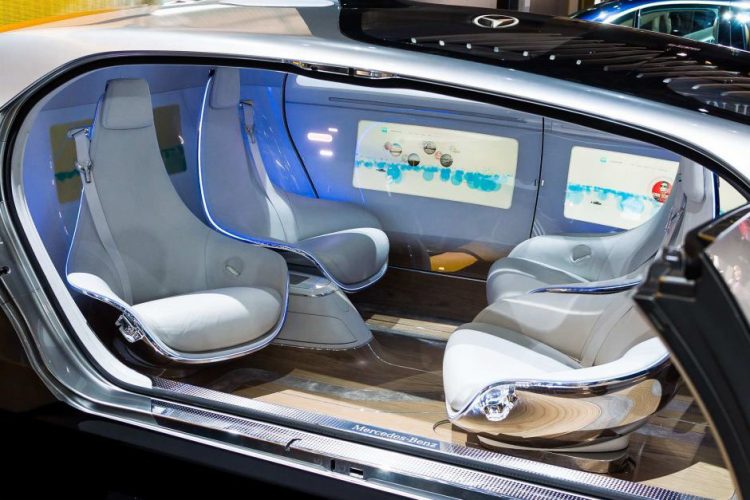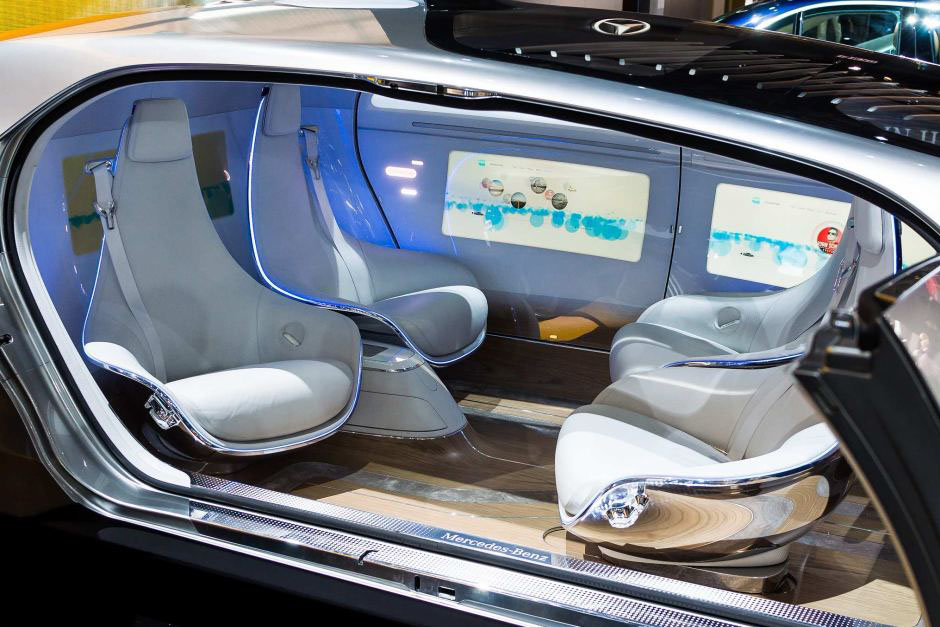
It’s not an academic question: These cars will be on the road very soon.
Ford Motor Co., which is using its cars for the pizza chain’s experiment in Miami, plans to have its autonomous cars operating commercially in 2021. Waymo, Tesla, GM, Toyota, Nissan and Audi, among others, plan to roll out these cars by 2020 or 2021, if not sooner.
The Domino’s Pizza self-driven delivery car works like this: You order a pizza through a cellphone app, and immediately receive a message with a code number.
When the self-driven car arrives, you write your code number on a tablet that is fixed to the car’s rear window, and a loudspeaker on the car’s rooftop confirms that you ordered the pizza. The car’s rear window rolls down, and you take your dinner.

In their book, “The Driver in the Driverless Car,” authors Vivek Wadhwa and Alex Salkever say the public conversation will soon shift to whether humans should be allowed to take control of the wheel at all.
“My grandchildren will ask me to tell them what it was like to drive a car in an old city. I’ll tell them it was scary, dangerous and wasteful,” one co-author wrote.
But driverless cars will kill many jobs, even if they create others. Uber and Lyft, the private ride-hailing platforms, are already experimenting with driverless taxi services in several U.S. cities.
What will happen with the more than 350,000 taxi drivers who, according to the U.S. Bureau of Labor Statistics, are working in the United States? And what will happen with the 38,000 registered taxi drivers in Buenos Aires, Argentina, or the 24,000 in Mexico City?
The first commercial autonomous vehicles are likely to be trucks on the highways, where driving conditions are safer, some car company executives say. There are more than 1 million truck drivers in America, according to U.S. Labor Department figures. The American Truckers Association puts the figure at 3.5 million. What will they do when many of their jobs disappear?
Meantime, Amazon, FedEx, UPS and DHL, among other companies, soon are expected to use drones to deliver packages. Many package transportation and pizza delivery jobs are likely to disappear as well.
At a time when the unemployment rate is at 4.1 percent, which is historically low, few in Washington are worrying about any of this.
Optimists note that people have been forecasting that technology would produce massive unemployment since the days of the Industrial Revolution, which started in the 18th century, and it hasn’t happened. Technology has always created more jobs than it has destroyed. But skeptics counter that technology is accelerating at such an exponential rate, that the coming job disruption will be unlike anything we’ve seen.
Fortunately, President Donald Trump and the leaders of China, Japan, Germany and other major world economies will have to deal with this issue when they meet Nov. 30 in Buenos Aires, Argentina, for the G-20 Summit. The long-scheduled central theme of the summit will be “The future of jobs.”
They should urgently discuss ways of raising global education standards, in order to re-train displaced workers. It’s time to start a serious global debate on how to confront the coming wave of technological job disruptions. And make no mistake — it is coming.






